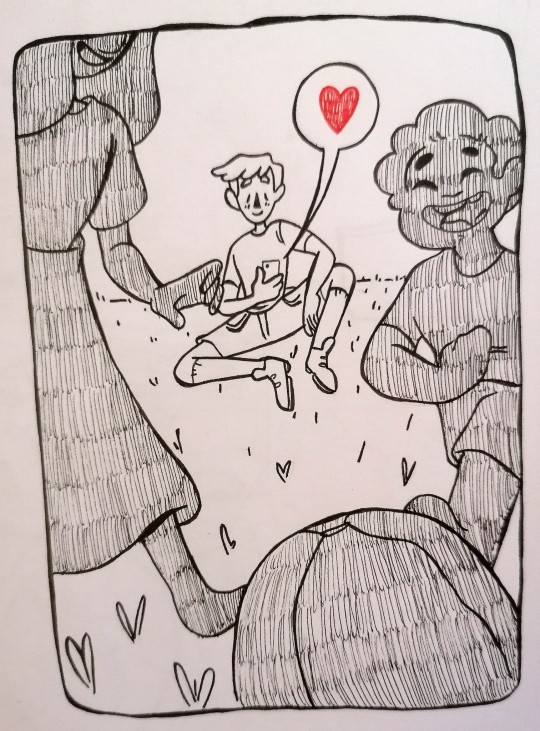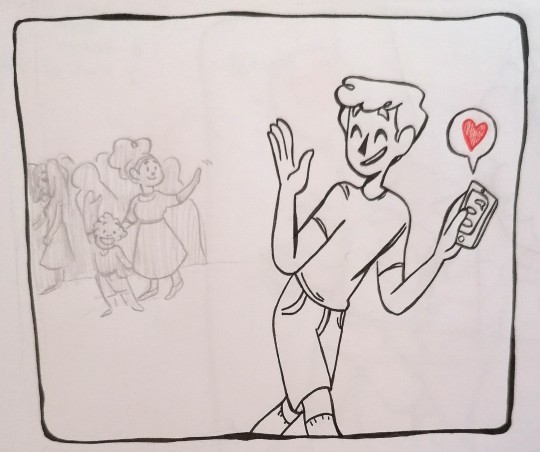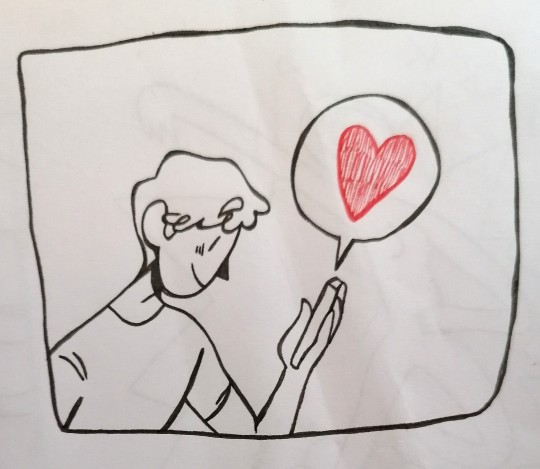#Also there's a bunch of Schrader cameos
Explore tagged Tumblr posts
Text






12 days of Bom day 5 : Make something for a ship/character you don't usually make content for
Mine is Churchtarts! Idk why I never make stuff for this ship but I hope this makes up for it x)
also if tumblr messes up the order of the pictures after I'm done posting I'm gonna throw hands
#12daysofbom#My art#Churchtarts#Elder poptarts#Elder church#Bom#Book of Mormon musical#Not my best work but it's cute hdhd#Also there's a bunch of Schrader cameos#Cause he'll be there tomorrow hehe#Yall know my fav ship by now let's be real
54 notes
·
View notes
Text
Movies Watched During Self-Isolation, Part One: Mostly Just Paul Schrader Stuff
I’ve been watching movies during this period of not leaving the house, which goes back a bit further than just when we are all told to stop leaving the house. The streaming services I have access to at the moment are just Kanopy and The Criterion Channel, so I have been watching different things than people who have Netflix or Hulu have been, most likely. These things are generally older, and possess a different set of aesthetic values than things seem to in our era of codified genres and niche marketing. Even the things I end up not being particularly into feel refreshing, in aggregate. There is a real sense of “they don’t make movies like this anymore!” which means, in a lot of ways, movies that seem keyed into being movies, that seem to understand the role of actors as charismatic, mysterious, or sexy, that then dictates the stories that get told. Let me break it down into some specifics, which will then function as recommendations.
The Comfort Of Strangers, 1990, dir. Paul Schrader. One thing I’ve been watching is a lot of Paul Schrader movies. This one comes from the era of the “erotic thriller” and was maybe marketed as such, but it feels like a post-Peter-Greenaway thing, maybe because of the presence of Helen Mirren. Mirren plays one half of weird and creepy older couple with Christopher Walken. Walken’s voice opens the movie with a disembodied narration that sets a tone of creepiness right from the jump, but the disembodied nature of it, heard as the camera roams through a residence, also recalls Last Year At Marienbad. The movie is largely about a younger couple, played by Rupert Everett and Natasha Richardson, who are vacationing in Venice, and end up being stalked and sort of seduced by Walken and Mirren. The lens of sexuality is a huge part of this movie, but it’s this sort of mysterious force, like the gaze of the camera is itself a malevolent thing, because whoever’s behind it can be an uncaring pervert. Movies’ particular relationship to sex, and sex’s example of a compulsive behavior with capability of destruction, feels like it plays a large role in a bunch of the Paul Schrader movies I watched. I often chose to watch them because of this, their understanding of compulsion made them compulsively watchable, which I appreciated when I felt distracted or inattentive.
In The Cut, 2003, dir. Jane Campion. This has a similar thing going for it. In many of the film’s earliest shots, the camera follows the lead (Meg Ryan) from a distance, with bodies we don’t see the entirety of in the foreground, giving the impression she’s being stalked or in imminent danger, although mostly she isn’t. She plays a writing teacher who lives in an apartment where the head of a murder victim is found in the garden. Mark Ruffalo plays a detective investigating, they end up fucking, even as she becomes paranoid about all the men around her, especially after her sister (played by Jennifer Jason Leigh) is also killed. The interest in this lies in the fact that it’s directed by a woman and has both an oppositional relationship to the male gaze and an interest in depicting female desire. It feels pretty sordid and a little rushed at the end. However, the ending seems rushed because the person that ends up being the killer is a person Meg Ryan’s character had no romantic or sexual interest in, and so largely ignored or didn’t think about. It’s not a bad movie but to whatever extent a movie stands on the strength of how interesting its actors are, this one doesn’t deliver. There’s a cameo by Patrice O’Neal though, as like the gay doorman at a stripclub Jennifer Jason Leigh lives above? If I understood correctly.
Patty Hearst, 1988, dir. Paul Schrader. This one’s really interesting, and I’ve kept thinking about it for a number of reasons. One is the interest of the Patty Hearst story itself, which I guess I hadn’t heard the entirety of or thought much about. For one thing, I don’t think I really understood the concept that she was brainwashed or had stockholm syndrome? Which is one of the things that makes the movie good, or what makes Natasha Richardson, playing Patty Hearst, so amazing to watch: She’s really compelling playing someone who has no idea why they’re doing what they’re doing at any given moment, because when you’re brainwashed, you don’t know you’re brainwashed, which is both perfectly obvious to me thinking about now, but that I also need to remind myself of when I think about MSNBC viewers positive feelings towards Joe Biden, for instance. The movie begins with her sudden kidnapping. There are shots that show her, in flashbacks to her life before that point, in a blindfold, that I wasn’t too into when I thought they were going to be sort of the entirety of the movie, but is I guess just intended as a visual metaphor for this sort of trauma as a deconditioning thing that removes whatever sense of a historical self she would’ve previously had. I also didn’t realize the Symbionese Liberation Army was basically just a sex cult with very few members, that robbed banks essentially just to fund themselves. Ving Rhames plays the leader of a group otherwise made up of a bunch of neurotic and ineffective white people. A lot of stuff happens, it’s all pretty interesting, and it doesn’t feel anything like a biopic, it always feels like a story is being told, but it’s always destabilized, and always heading towards doom. After arrest, Patty Hearst’s lawyer makes the argument that, even though she’s clearly brainwashed and undergone great trauma, and that is why she joined in bank robberies and the spouting of revolutionary rhetoric, it will be impossible for her to get a fair trial making that argument as so many parents felt their children went away to college in the 1960s and came back brainwashed as different people, though they did it of their own free will.
Hardcore, 1979, dir. Paul Schrader. This one’s about George C. Scott as midwesterner whose daughter gets kidnapped on a Church trip to California and ends up in porno. I guess has some parallels with Patty Hearst in terms of preying on parental fears, but also has this sort of sordid exploitation-y vibe in its basic summary. Peter Boyle plays a private detective whose debauched nature really bothers George C. Scott, whose beliefs the film takes pretty seriously. The end of the movie revelation that the daughter basically did run away and hates her dad sort of comes from nowhere, but the daughter is largely absent from the entire movie, and the disconnect between her and her father plays out so much from the father’s perspective it’s not really unearned. It also makes sense considered in the context of Patty Hearst, which is both a deepr work, but also a historical one, sort of about the creation of the moment and cultural context in which Hardcore would’ve been made and received. I wish Schrader’s first movie, Blue Collar, was available on a service I had access to.
Auto Focus, 2002, dir. Paul Schrader. This was the first Paul Schrader movie I was aware of, it was sort of critically-acclaimed. I avoided it because it seemed somewhat exploitative and grossly voyeuristic, being about Hogan’s Heroes star Bob Crane, here played by Greg Kinnear, and his interest in filming himself having sex with random women lured in by his celebrity. The film is characterized by a certain glib irony, but it’s also defined by the presence of Willem Dafoe, who’s great in it, as a completely loathsome person, taking advantage of Bob Crane’s celebrity to participate in the sex he otherwise would not have access to, and hastening his downfall by transforming him into a totally debauched sex addict, before finally killing him. The contrast between Bob Crane’s wholesome exterior and his descent into depravity is mirrored by a contrast between the the sort of jokey mockery of that contrast and a lived-in sense of squalor in the depiction of two men in a basement jerking off as they watch porn together.
Light Sleeper, 1992, Paul Schrader. Dafoe stars in this one, alongside Susan Sarandon, much hated by some for her adamant refusal to support Hillary Cilnton. This makes Sarandon admirable to me, but I don’t know how much I’ve seen her in. She’s in Louis Malle’s Atlantic City, also on the Criterion Channel, a movie I thought was great when I saw it but have forgotten almost everything about in the years since. Dafoe plays a mid-level drug dealer, who’s been off drugs for a few years, and Sarandon is his higher-level contact, who’s looking to get out of selling entirely and enter the cosmetics business. Dana Delaney plays Dafoe’s ex-wife, from his addict days, back in town because her mother is dying in the hospital. The compulsion towards sex that’s present in a bunch of other Schrader movies is replaced here with drug addiction as this force to fight against, or exist in tension with, and also love, which is very present in this movie and very tender. The movie also boasts early-career cameos by Sam Rockwell and David Spade, and the great Jane Adams plays Dana Delaney’s sister. Delaney’s character ends up relapsing and dying, probably due to the shock of her mother’s death, probably not helped by the unplanned reminder of DaFoe’s character. It seems very rare for a movie to have roles as strong for women as this movie does. Even the psychic who Dafoe sees in two scenes, played by Mary Beth Hurt, who I don’t know from anything else, is great.
La Truite, 1982, dir. Joseph Losey. A friend of mine highly recommended Joseph Losey’s film Mr. Klein, but that one’s hard to track down. This stars a young Isabelle Huppert as a young woman who gets flown out to Japan by a rich businessman. He doesn’t have sex with her, just sort of enjoys the money being lavished on her, but her husband, who she also does not seem to have sex with, gets pretty pissed about it.
Eva, 1962, dir. Joseph Losey. This is a really similar movie from Joseph Losey in a lot of ways. It stars Jeanne Moreau, who also has a smaller part in La Truite, and it’s also about a woman whose whole deal is getting money from rich dudes and not having sex with them. In La Truite, Huppert’s life gets kind of ruined, in this movie, Moreau does the ruining, of an author/hack who is married to an actress from one of his work’s movie adaptations who doesn’t know what the he confesses to Moreau, which is that he stole the book from his dead brother and didn’t write a word of it. I wasn’t that into either of these movies but I feel like the sort of archetype, of like a young beautiful woman who doesn’t want sex and sort of just busts men’s balls “works” in a film, how film’s objective or ambivalent view makes their motivations opaque in a way that allows them to be compelling to male and female audiences alike, if for different reasons. Vera Chytilova’s Daisies plays on this sort of youthful feminine brattiness too, to a more anarchic effect. None of these characters have as much depth as Patty Hearst or any of the women in Light Sleeper but they nonetheless suggest the possession of such, kept far away from the camera’s eye.
5 notes
·
View notes